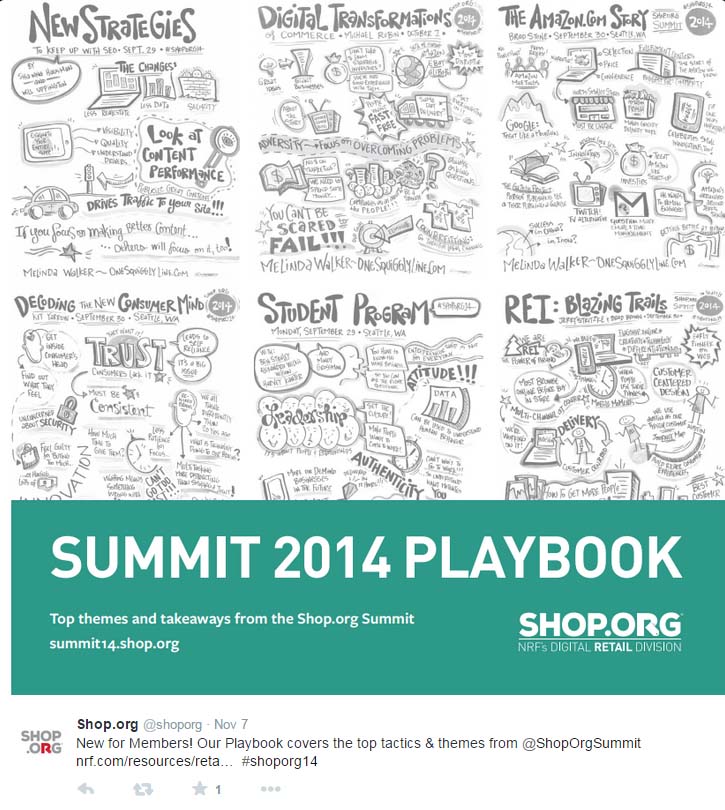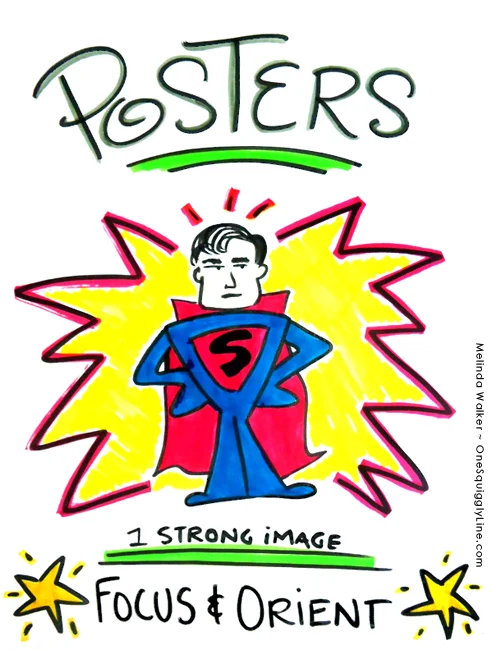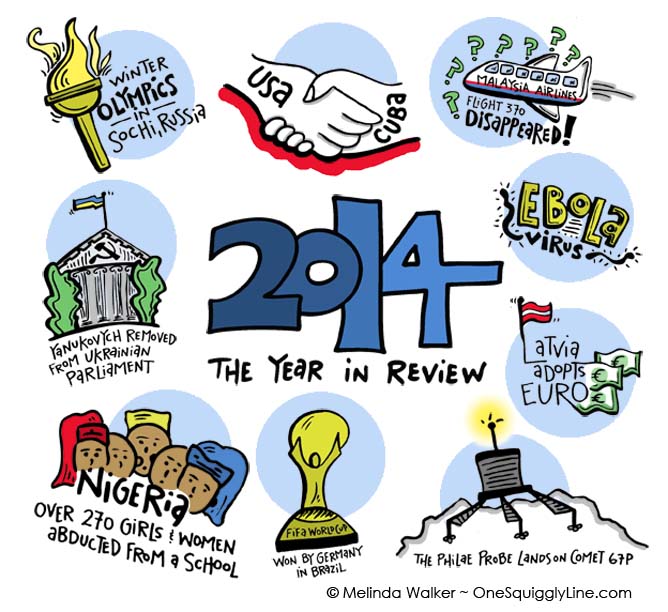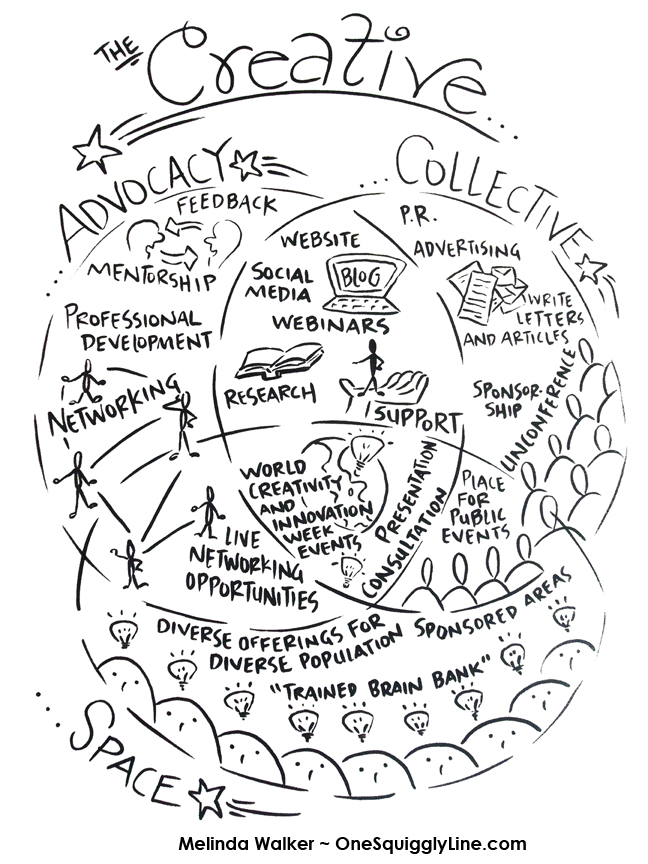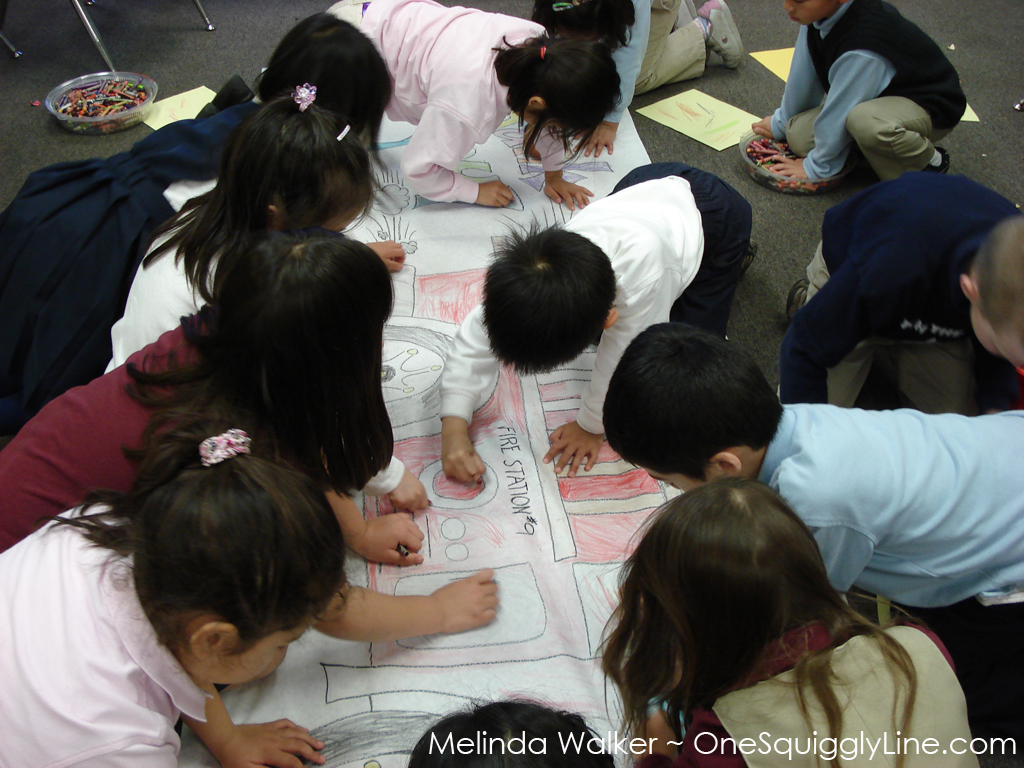Graphic recording happens live, in real-time and on a large scale right in front of everyone. That's part of what makes it so powerful, engaging, and memorable. But those images can be quite powerful, engaging, and memorable after the event, too. So how do you put them to good use? Shop.Org had a great idea, as shown above in this Twitter screenshot.
Visual Thinking & Sketch Animation: One Squiggly Line
I added this quick animation to my Services page. Unfortunately, many sketch animations are confidential, created only for internal company use, so they can't be shared. But they're a great way to bring training materials, sales presentations, product highlights, or any other information to life.
Pre-Event Visuals: Why Bother?
Email vs. a handwritten note. Wonder bread vs. homemade bread. Spaghetti-O's vs. homemade spaghetti. Clothes off the rack vs. clothes tailored to fit.
There's a difference. A big one. And people notice. Handmade things with a personal touch are almost always preferred to the mass produced.
Hand drawn pre-event visuals (like the one above) are much warmer and friendlier than the standard computer generated visuals most folks use. And they can support your branding just as much as those slick and glossy computer generated prints.
Visual Thinking & Drawing: Make Some Posters!
Visuals set the stage before people even walk in the room. When people are greeted by a fun and friendly poster, it makes them feel welcome. And puts them in a more positive mood. They know, before anyone has said a word, that you've put some thought into the gathering...and this gathering might actually be fun!
Your visuals don't need to be super elaborate. Simple can be fabulous! Just stick with one main image and a short title. If you need a subtitle, make sure it's short and put it on the bottom, under your image. Add some color and you're set!
Visual Thinking & Synthesis Images: 2014 in Review
The brain likes to keep things simple. Then it knows just what to focus on. And remember. When there's a ton of information, it's far too easy to get distracted. Or confused. Or just plain tired.
That's one reason synthesis images are so helpful. They make things simple so you can easily understand and remember them. Because they're visual, you literally see the whole picture. That means you get to see how things are connected or related. And new ideas and insights are more likely to occur.
Here's a super simple synthesis image of a few major headlines and topics of 2014.
Graphic Recording: Color & Lines Create Movement
People will often come up to me on live Graphic Recording jobs and say, "Wow, I sure wish I could draw like you!" That's a really nice compliment. But the truth is, most people really can draw most of the things they're looking at. The "wow" factor comes from the design.
Take the graphic recording above. There aren't many pictures here - some simple faces, a few dollar bills (rectangles with dollar signs on them), and a bunch of mosquito type things that could be any kind of flying insect. Nothing fancy!
What grabs people's eye and draws them in is the design itself. In between the bold lettering on the top and bottom are a bunch of powerful lines and strong colors. The bold lettering frames the page and keeps it grounded. The powerful lines direct your eye around the page so you're sure to look at everything. The strong colors direct your eye, too. They also organize the information so you can more quickly understand how it's related.
If you only look at the pictures, you know the talk had something to do with bugs, people, and money. The design itself is what invited you to dig a little deeper and make sense of it all.
This graphic recording was done as an experiment, using only a black marker and crayons. I discovered crayons tend to disappear when you make the background white. That's why I left the image as is - with a blotchy gray background. That doesn't happen with markers!
Visual Thinking: Get Creative with Venn Diagrams
Venn diagrams have been around forever. They're everywhere these days, it seems. And they're here to stay. (That's a good thing!)
Don't know what they are? Pop into a kindergarten class and any number of kids will be glad to show you...if they remember what it's called. Better yet, just describe it: "You know that graphic organizer you use, the one with the big circles? Tell me about it!"
Venn diagrams are one of many graphic organizers used in the world of education. Graphic organizers are simply tried and true ways to organize information so you can see how things are related. They make complex information easier to understand. Even kindergarteners appreciate that!
When you add pictures to them, things get even better. Understanding deepens. Retention increases. The information is more inviting and engaging, too. Maybe even fun!
This Venn diagram was created for a presentation at a conference. It helped both the presenters and participants better understand the three separate but related parts of their program.
Visual Thinking: Words and Pictures Together
Pictures often steal the show when it comes to visual thinking. But words are important, too. Images that contain both words and pictures are more far more memorable because they both reinforce each other - it's repetition without being monotonous. And teaming the two clears up ambiguity, too. So not only is the message more memorable, it's more accurate.
Another "waiting in the airport" doodle above, started in San Francisco and finished in Palm Springs.
Visual Thinking Template: Evaluation Matrix
Visual thinking helps to make things clear. It's really important to see all options clearly when it comes time to make a decision. A matrix is a great (and easy) way to make it clear how your options stack up.
To use, write the names of four books at the top (by each of the four books!). Write your criteria in the boxes on the left. For example, "Is the topic interesting to me?" "Do I understand most of the words?" Use a happy or sad face to answer each question about each of the four books. Then it's easy to see the book that best meets the criteria - it has the most happy faces.
This evaluation matrix was created for use in elementary classrooms but can easily be adapted for adult use.
Graphic Recording: Get 'em Engaged, Keep 'em Engaged
Here's a picture from one of my kindergarten classes when I was an art teacher. The dozen or so kids visible are working on a great big thank you banner for the fire station they just visited. (I drew it and they colored, following guidelines from our lesson in color theory.) As you can see, they're all engaged and working hard to see the finished picture!
Large-scale graphic recording has the same effect on grown ups. It gets them engaged (even thought they're just watching) and keeps them engaged in the content. Even when minds wander, the subtle movement of the graphic recorder and the curiosity of what the finished picture will look like draw them right back to the content - just where you want the focus to be!

